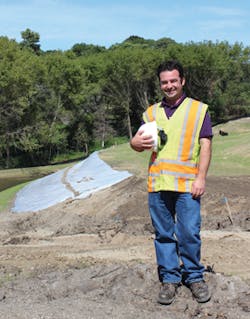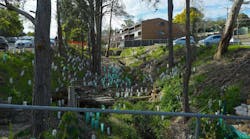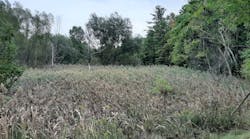From where he sits-and that’s often in an airplane seat heading from one client to another-Aaron Mlynek sees an increasing level of competency and awareness regarding erosion control and stormwater pollution prevention plans (SWPPPs). Mlynek is technical director for construction stormwater compliance with Westwood Professional Services, a multi-discipline surveying and engineering company providing land development, renewable energy, power delivery, and oil and gas services to clients nationwide. Mlynek provides technical oversight and management of National Pollutant Discharge Elimination System (NPDES) and SWPPP compliance programs. “It depends on the location, how much the local or state government is involved, and how much oversight there may be,” Mlynek says regarding the levels of concern on construction sites. “The more they may be under scrutiny or see a regulatory presence, the more it increases their awareness. It also depends on their proximity to surface waters-they see what they are protecting and why it’s important.” National developers and contractors are most apt to take erosion control seriously, he says. “The sheer number of their projects increases their likelihood to see enforcement inspection. Ultimately, it’s about the bottom line. A lot of contractors really get it- they’re going to grade it once, stabilize it, and don’t want to come back and grade it again.”
What He Does Day to Day Mlynek works with project managers internally on wind, solar, residential, and commercial projects. He’s written SWPPP narratives in 28 states. Mlynek assists clients- primarily developers and contractors-with compliance questions, such as how something in the construction process might relate to their stormwater permit. He provides technical review of best management practices. He also provides technical assistance in the construction phase by conducting routine inspections, providing oversight, and troubleshooting.
What Led Him to This Line of Work Mlynek graduated with a bachelor of science degree in natural resource management from the University of Minnesota. One of his first jobs in college was as a park ranger for the US Army Corps of Engineers, doing water-quality sampling at one of the Corps’ dam locations and its chain of lakes. He’s also done erosion control for a local municipality’s water resource program, entailing some elements of the MS4 permit for construction site runoff controls. In another job for a water conservation district, Mlynek conducted routine inspections for the county and its watershed authority. “I didn’t expect to be on the construction side of things with a natural resource management degree, but the water-quality experience brought me to the position I’m currently in, where I get to participate in preconstruction and construction activities to not only keep the clients compliant, but protect water quality,” he says.
What He Likes Most About His Work
“I love that there’s not only a lot of variety with job project types, but that I experience different climates and regions in the United States,” says Mlynek. One week, he may be writing a SWPPP for a 50-acre Minnesota residential site, then do a commercial project, move on to a 300-acre solar site in the Southwest, and then go to a 1,000-acre wind development in the southern US.



